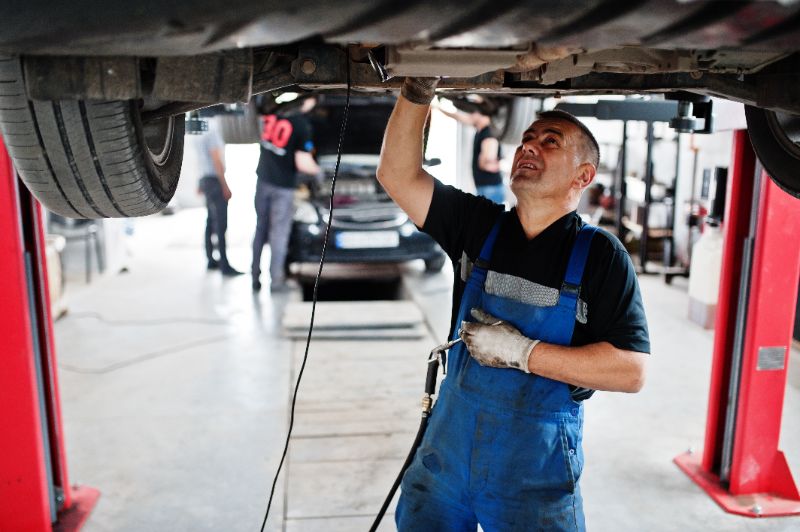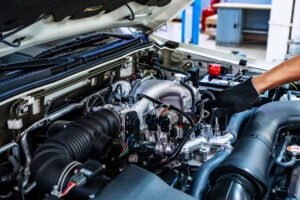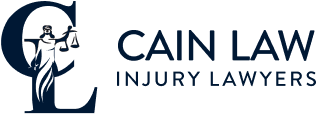
When Faulty Parts Turn Accidents Into Product Liability Cases
Car accidents are traumatic enough on their own, but discovering that a defective auto part caused or worsened your crash adds another layer of complexity to your situation. In Oklahoma, when vehicle components fail due to manufacturing defects or design flaws, your accident claim transforms from a standard negligence case into a potential product liability claim. These cases require legal knowledge to navigate successfully. Beyond dealing with injuries and vehicle damage, you’re now facing questions about who’s truly responsible, what evidence you need to preserve, and how to ensure you receive fair compensation for all damages caused by the defective part.
Don’t let the complexities of a defective auto part claim overwhelm you. At Cain Law, we’re here to help you navigate the legal maze and secure the compensation you deserve. Reach out to us today at 855-759-7874 or contact us to discuss your case and explore your options.
Understanding Your Rights Under Oklahoma’s Product Liability Laws
 Oklahoma law specifically protects consumers injured by defective products, including auto parts. Under the state’s product liability framework, manufacturers, distributors, and retailers can all be held accountable when their products cause harm. Unlike regular accident claims that focus on driver negligence, defective part cases center on proving the component was unreasonably dangerous when it left the manufacturer’s control.
Oklahoma law specifically protects consumers injured by defective products, including auto parts. Under the state’s product liability framework, manufacturers, distributors, and retailers can all be held accountable when their products cause harm. Unlike regular accident claims that focus on driver negligence, defective part cases center on proving the component was unreasonably dangerous when it left the manufacturer’s control.
Oklahoma follows a “strict liability” approach when car accidents are caused by defective auto parts. You don’t need to prove the manufacturer was negligent—only that the part was defective and that defect caused your injuries. This distinction is crucial, as it opens additional avenues for compensation beyond what a typical car accident claim might provide. However, these cases are technically complex and often involve going up against large corporations with extensive legal resources. Understanding the state-specific laws that apply to your situation is essential before proceeding with your claim.
Critical Timeline and Steps for Defective Auto Part Claims in Oklahoma
Pursuing a defective auto parts claim requires prompt action and adherence to specific legal procedures. Oklahoma’s statute of limitations gives victims just two years from the date of injury to file a lawsuit, making timely action essential. This timeline can be particularly challenging in defective parts cases, as the connection between the part failure and the accident may not be immediately apparent. Following these key steps will help protect your rights and strengthen your claim:
- Preserve the vehicle and all potentially defective components exactly as they were after the accident—modifying or repairing the vehicle can destroy crucial evidence needed to prove your case.
- Seek immediate medical attention and document all injuries thoroughly, as insurance companies often scrutinize the timing between the accident and medical treatment in Oklahoma claims.
- Obtain the vehicle’s maintenance records to counter potential defense arguments that poor maintenance, not a defect, caused the part failure.
- Identify all potentially liable parties in the distribution chain—unlike typical accident claims, Oklahoma product liability law simultaneously allows claims against manufacturers, distributors, retailers, and parts suppliers.
- Consider the vehicle’s “diminished value” claim—a lesser-known aspect of Oklahoma law that allows compensation for the reduced market value of your vehicle even after repairs due to accident history and use of aftermarket parts.
Navigating the Path to Fair Compensation for Defective Part Injuries
Resolving a defective auto parts claim often requires a comprehensive approach that addresses both immediate and long-term damages. Unlike standard car accident claims, product liability cases in Oklahoma may involve multiple defendants and complex liability issues. At Cain Law, we regularly help clients understand the full scope of compensation available, which extends beyond basic medical bills and property damage. This includes pursuing damages for diminished vehicle value, future medical treatments, lost earning capacity, and more.
The resolution path typically involves gathering important testimony from automotive engineers, accident reconstructionists, and medical professionals who can establish the connection between the defective part and your injuries. Our experience with these claims allows us to anticipate the defense strategies commonly employed by auto manufacturers and parts suppliers, who often attempt to shift blame to drivers or other factors. By building a robust case supported by technical evidence and analysis, we work to ensure that defective part victims aren’t left bearing the financial burden of manufacturing failures.
Common Defective Parts That Lead to Accidents in Oklahoma
Understanding which vehicle components most frequently fail can help you identify potential product liability issues in your accident. Certain defective parts have a more devastating impact on vehicle safety than others, often leading to catastrophic accidents on Oklahoma roadways. Being aware of these common failure points not only helps in the aftermath of an accident but can also alert you to potential safety issues before they cause harm. Many of these defects become apparent only after they’ve caused multiple accidents, sometimes leading to nationwide recalls that affect thousands of vehicles across Oklahoma.
Brake System Failures and Their Serious Consequences
Brake system defects rank among the most dangerous vehicle component failures and are particularly hazardous on Tulsa’s busy highways, like I-44. These defects can manifest as sudden total brake failure, partial braking power loss, or uneven braking that causes vehicles to pull to one side. Common defective components include master cylinders, brake lines, calipers, and electronic braking systems. Manufacturers sometimes use inadequate materials that deteriorate prematurely under normal driving conditions, or design flaws might allow moisture intrusion that compromises braking performance. We’ve observed that brake failures often occur without warning, giving drivers no opportunity to adapt or prepare for the emergency situation. These cases typically require extensive engineering analysis to prove the defect existed prior to the accident rather than resulting from it.
Proving Causation: The Critical Element in Defective Parts Claims
The cornerstone of a successful defective auto parts claim in Oklahoma is establishing a clear causal link between the defective component and your injuries. This process, known as proving causation, often represents the most technically challenging aspect of these cases. Unlike standard car accident claims, where causation may be straightforward, defective part cases require demonstrating that a specific component failed, that the failure resulted from a defect rather than normal wear or misuse, and that this failure directly caused or significantly contributed to the accident and resulting injuries. Oklahoma courts apply strict standards for this proof, requiring objective evidence rather than speculation or assumption. While proving causation, many factors – such as the most dangerous times for auto accidents, the actions of the driver, etc. – will be taken into account.
The Role of Witnesses in Building Your Case
Witnesses play a crucial role in defective auto part claims, providing the technical analysis and testimony needed to establish causation. These professionals typically include automotive engineers who can identify design or manufacturing defects, accident reconstructionists who determine how the part failure contributed to the crash, and metallurgists who analyze material failures. In Oklahoma courts, witnesses must meet specific qualification standards to have their testimony admitted as evidence.
The most compelling witnesses combine academic credentials with practical industry experience and a history of objective analysis rather than consistently testifying for either plaintiffs or defendants. These witnesses will typically examine the physical evidence, review design specifications and testing data, and prepare detailed reports explaining how the defect occurred and why it fails to meet industry safety standards. Their testimony often becomes the deciding factor in whether your claim succeeds or fails.
Manufacturer Defenses and How to Overcome Them
Auto manufacturers and parts suppliers rarely accept liability without a fight, instead deploying well-established defense strategies to avoid responsibility for defective components. Understanding these tactics is essential for developing an effective counter-strategy in your Oklahoma product liability claim. Manufacturers typically have substantial resources to defend against claims, including teams of engineers, researchers, and attorneys who focus exclusively on product liability defense. Being prepared for these challenges can make the difference between a successful claim and a dismissed case.
Combating the “Misuse” Defense in Oklahoma Claims
One of the most common defenses in auto defect cases is the allegation that the consumer misused the product or modified it in a way that caused the failure. Oklahoma law recognizes that manufacturers must design products to be reasonably safe even when foreseeable misuse occurs, but this remains a gray area that defense attorneys frequently exploit.
To overcome this defense, documentation of how you used the vehicle becomes critical—maintenance records, driving history, and evidence that you followed all manufacturer recommendations can help establish that you used the vehicle as intended. Similarly, if you’ve modified your vehicle in any way, be prepared to demonstrate that these modifications did not contribute to the component failure. Preservation of evidence is particularly important when facing this defense, as alterations to the vehicle after the accident can make it impossible to disprove claims of misuse or modification.
Frequently Asked Questions
1. How do I know if a defective part caused my car accident in Tulsa?
Identifying a defective part as the cause of your accident often requires professional investigation. Warning signs include unexpected vehicle behavior before the crash (such as steering pull, brake fade, or sudden acceleration), component failure without apparent cause, or similar failures reported in identical models. If you suspect a defective part, it’s crucial to preserve the vehicle in its post-accident condition without repairs until an official can examine it. A product liability lawyer in Tulsa can arrange for qualified automotive engineers to inspect the vehicle and identify potential car defects that may not be obvious to untrained observers.
2. Can I file a Tulsa accident lawsuit against both the other driver and the parts manufacturer?
Yes, Oklahoma law allows you to pursue claims against multiple parties simultaneously when different factors contribute to an accident. This means you can file claims against another driver for their negligence while also pursuing a product liability claim against the manufacturer of a defective part. This approach, known as alternative pleading, helps ensure all responsible parties are held accountable. Your Tulsa car crash attorney can help determine the appropriate allocation of fault between the driver and manufacturer, which becomes particularly important in Oklahoma’s modified comparative negligence system, where your recovery may be reduced by your percentage of fault.
3. What compensation can I recover in a defective parts claim that I couldn’t get in a regular accident case?
Defective parts claims in Oklahoma often provide broader compensation possibilities than standard accident cases. Beyond the typical damages for medical expenses, lost wages, and pain and suffering, product liability claims may include punitive damages designed to punish manufacturers for particularly egregious conduct. You may also recover damages for the diminished value of your vehicle, costs associated with the replacement of other potentially affected components, and compensation for the increased risk of future accidents. Additionally, Oklahoma product liability law sometimes allows recovery of attorney fees and litigation costs, which typically aren’t available in standard negligence cases.
4. How long do I have to file a defective auto parts claim under Oklahoma vehicle defect laws?
Oklahoma imposes a two-year statute of limitations for product liability claims, including those involving defective auto parts. This period typically begins on the date of the accident or injury. However, in some cases involving latent defects that weren’t immediately discoverable, the court may apply the “discovery rule,” which starts the clock when you knew or reasonably should have known about the defect. Oklahoma also has a statute of repose that generally bars claims filed more than ten years after the product was first sold, regardless of when the defect was discovered. These timelines make prompt legal consultation essential, as critical evidence may be lost or altered if too much time passes.
5. What happens if the defective part that caused my Tulsa car injury was already under recall?
If your accident involved a part that was already under recall, this significantly strengthens your case by establishing that the manufacturer was aware of the defect. However, the manufacturer may attempt to shift blame by arguing that they fulfilled their legal duty by issuing the recall notice. Your ability to recover may depend on factors such as whether you received proper notification of the recall, how long ago it was issued, and whether the manufacturer made reasonable efforts to ensure affected vehicles were repaired. A Tulsa auto accident lawyer can help determine if the manufacturer met their legal obligations regarding the recall and how this affects your specific claim.
Work with an Auto Accident Lawyer
Defective auto parts cases represent some of the most technically complex claims in personal injury law, requiring knowledge of both automotive engineering and Oklahoma’s product liability statutes. When facing the aftermath of an accident caused by a faulty component, working with an attorney who understands these nuances can make a substantial difference in your outcome. The right legal representative will not only help identify all potentially responsible parties but will also know how to preserve crucial evidence, work with appropriate witnesses, and anticipate the defense strategies commonly employed by manufacturers.
With proper legal guidance, you can navigate the challenging process of proving a defect existed, establishing how it caused your injuries, and securing the full compensation you deserve for all resulting damages. This support becomes particularly valuable when confronting large corporations with extensive legal resources designed to minimize their liability for defective products.
Don’t let the intricacies of a defective auto part claim leave you in a bind. At Cain Law, we’re ready to guide you through the legal labyrinth and help you claim the compensation you’re entitled to. Give us a call at 855-759-7874 or contact us today to discuss your case and explore your options.

